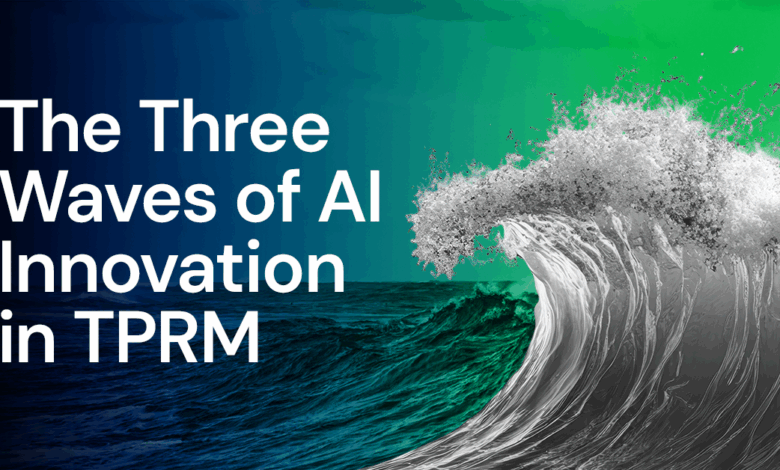
Most companies think they have risk under control. In fact, over 75% say they have the internal capabilities needed to manage supply chain threats. But look closer, and cracks start to show.
Only 60% of companies have visibility into their tier one suppliers. Just 30% can see beyond that. And when a threat emerges? It takes an average of two weeks to plan and execute a response. This leads to vulnerable operations, mounting pressure from regulators, and an uneasy C-suite wondering whether the next crisis is already in the supply chain.
Artificial intelligence is the key to getting ahead of these supply chain threats. Risk leaders can use AI to automatically scan prospective suppliers before onboarding, flag human rights concerns and cybersecurity vulnerabilities early, and monitor global news and regulatory feeds in real time for emerging supplier risks.
But this shift comes with a choice: adopt early and lead or wait and react. And getting it right starts with understanding how the three waves of AI are reshaping supplier risk management.
The AI Shift That’s Rewiring Risk, Three Waves at Once
AI is altering how organizations see, interpret, and act on supplier risk. One day it may even anticipate threats and act before humans log in. But what makes this transformation messy is that leaders aren’t just dealing with one new wave of innovation, they’re dealing with three interconnected waves that are deeply affecting the market in quick succession.
These waves move from data-driven insights to interactive assistance, to autonomous orchestration, each building on the last. How your organization chooses to adopt AI depends on your unique needs, capabilities, and success metrics. To truly enhance your TPRM program, it’s crucial to understand how each wave can deliver value, and to balance your investments with realistic expectations. The strategic approach ensures your program evolves effectively and delivers consistent performance improvements over time.
Wave 1 – Machine Learning:
Machine learning is already transforming risk management by automating manual, repetitive tasks that previously consumed hours of effort. It surfaces patterns buried in massive datasets – patterns no spreadsheet or siloed dashboard could ever reveal. That means smarter supplier segmentation, faster onboarding, more accurate and actionable risk evaluations, and improved decisions.
For example, machine learning models can flag anomalies in supplier responses, identify risk clusters by geography or industry, and adapt scores based on predicted exposure. It’s no longer just about identifying what’s risky – it’s about prioritizing what matters most.
Wave 2 – Generative AI:
Generative AI builds on that foundation by changing how risk professionals interact with data. Instead of navigating dense portals or digging through policy binders, users can simply ask a question – “What are the compliance risks for this vendor in Malaysia?” or “Draft a remediation plan based on this audit finding” – and receive clear, contextual responses instantly.
This second wave will soon make complex information more accessible. It will lower the barrier to insights, empowering teams that are already stretched thin by shifting regulations, rising expectations, and growing data complexity. Generative AI will turn passive repositories into responsive advisors.
Wave 3 – Agentic AI:
The third wave is the most transformative: Agentic AI. Here, AI doesn’t just analyze or assist – it acts. Agentic systems can initiate mitigation plans, reject non-compliant vendors, and adapt controls dynamically as new risks emerge. They don’t wait for instruction. They operate with intent.
This is the shift from AI as a passive copilot to an autonomous decision-maker. It’s what will take many risk management programs from reactive to predictive – and from siloed to orchestrated.
The Risk Leader’s Dilemma
The industry is still in the early stages of all three waves, but the potential is undeniable – and so is the hesitation. On one side, there’s FOMO – fear of missing out on a competitive edge or getting blindsided by risks others catch sooner. On the other, there’s FOMI – fear of massive implosion, deploying unproven technology too quickly without strategy, policy or structure.
Like any technological transformation, businesses are resource constrained and must make wise decisions on technology investments. AI adoption in risk management will follow a standard innovation curve.
Visionaries experiment early. Pragmatists wait for proven value. Skeptics resist until change is no longer optional. Where your organization lands on that curve will shape your next move – but it shouldn’t stall progress.
Four Steps to Move on AI with Confidence
AI adoption doesn’t require a massive leap. It starts with small, strategic shifts. Here’s how to begin:
1. Know your risk appetite.
Are you an early mover, a cautious optimizer, or a wait-and-see player? Understanding your appetite and any potential trade-offs helps set internal expectations for you and your organization and helps build a defensible case for AI-enabled improvements. A major challenge we see is an absence of clear organizational policies on AI, which can leave risk teams uncertain about how to make informed decisions regarding AI adoption. Remember, it’s not just about adopting the tech – it’s about doing it in a way that matches your culture, governance, and risk appetite.
2. Assess your program’s maturity.
Is your current risk management approach ad hoc or orchestrated? Is ownership and accountability clear? Pinpoint where your program gaps lie first and how AI can fill them. With the right applications, AI may help you better balance your resources and rapidly mature your program. Get started with an assessment of your program maturity and where machine learning and decision models can accelerate and improve existing process performance.
3. Prioritize high impact use cases.
Where does your team spend the most time today? That’s where automation and AI can have the biggest impact. Supplier onboarding, streamlined risk assessments, improved workflows and reduction of bottleneck processes (questionnaires), integrated intelligence and real-time news monitoring, automated audit readiness – these are areas where AI can demonstrate value quickly and build momentum for broader adoption and interest in the next wave.
4. Balance urgency with alignment.
AI adoption needs a clear project framework. Rushing in creates confusion and disappointing ROI. But waiting too long may leave your organization exposed – or simply lagging behind the rest of the market. Build urgency with intention; have a strategy, build a plan, define policies and success metrics, and ensure executive buy-in. Deliver the proof, then move forward.
The Future Belongs to the Proactive
Risk management isn’t getting simpler. Geopolitical uncertainty, trade wars, climate risk, cyber threats, and regulatory pressure are converging – and hitting supply chains from all angles.
The organizations that will thrive in this environment aren’t the ones that react faster. They’re the ones that see further. The ones that use AI not just to keep pace, but to stay ahead. The ones that trade spreadsheets and red flags for intelligent systems that evolve with the risk landscape.
AI won’t eliminate the need for human judgment or intervention. But it will redefine where humans spend their time and apply their intelligence. Less chasing. More deciding. Less reactive. More resilience.
The AI era of risk management isn’t on the horizon – it’s already here. The only question is: are you waiting for a crisis, or building for what’s next?





